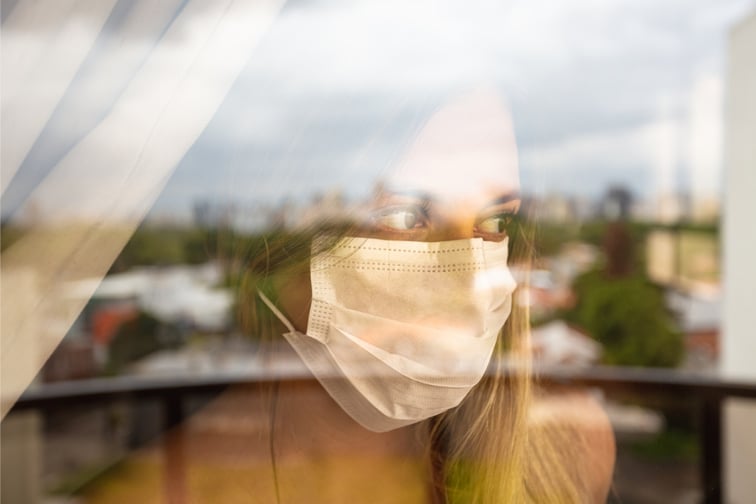

Even with high vaccination rates across all states and territories, many employers are wary that the further easing of COVID-19 restrictions and reopening of borders will leave much of Australia’s labour force exposed to the virus, resulting in the rise of workers’ compensation claims.
Since the onset of the pandemic in 2020, Australia has recorded more than 3,000 coronavirus-related workers’ compensation claims, with New South Wales and Victoria – the two hardest-hit states – registering the highest number of claims, according to data obtained by ABC News.
In NSW, COVID-19-related workers’ compensation payouts topped $7.8 million in November, with an expected gross cost of $15.6 million. At that time, employers in the retail, public administration and safety, healthcare and social assistance, accommodation and food services, and transportation received the highest number of claims.
The State Insurance Regulatory Authority (SIRA), NSW’s workers’ compensation watchdog, has estimated the cost of such claims to reach $638 million in the 12 months after the state reopens its borders, although some analysts say this value is “overestimated.”
Victoria, meanwhile, has logged $7.2 million in total COVID-19-related worker’s compensation claims by November last year, with the future cost expected to hit $25.2 million. WorkSafe Victoria, the state’s health and safety regulator and manager of its workers' compensation scheme, did not provide a similar modelling to that of SIRA’s.
Any employee in Australia who gets infected with COVID-19 while at work can make a claim for workers’ compensation. To do this, employees are generally required to provide information that establishes the link between performing their jobs and contracting the virus. But because exposure often occurs in a public setting, determining the exact time and place of infection and if employment was a significant contributing factor can be difficult. This is the reason why each claim is assessed individually.
Each state and territory government runs its own work cover scheme. Because of this, the eligibility requirements and entitlements differ depending on where the staff works.
To find out how each state and territory handles coronavirus-related compensation claims, Insurance Business checked out the websites of the corresponding agencies. Below is a state-by-state guide on who is eligible to make a claim and what entitlements are available.
NSW is one of two states that have amended their workers’ compensation laws to specifically address COVID-19. The amendments, which were made in May 2020, established “presumptive rights” to employees of “prescribed” occupations who contract the virus because of their work. These include workers in the following sectors, according to SIRA’s website.
SIRA adds that eligible workers are “presumed to be incapable of work until 21 days from the date of injury, or if the worker still has COVID-19 at this date, until the date marking the end of the worker’s incapacity on the worker’s certificate of capacity.”
NSW workers who contract the virus may also be entitled to:
Read more: Discover who is eligible for benefits covered under workers comp
WorkSafe Victoria requires employees to prove that their jobs were a substantial or significant contributing factor to contracting COVID-19.
“Under legislation, a disease such as COVID-19, suffered by a worker would be regarded as being due to the nature of employment, if that employment gave rise to a significantly greater risk of the worker contracting the disease. Examples include where employment involves duties that include interaction with people who have contracted the virus,” the agency’s website says.
Similar to their counterparts in other states and territories, eligible Victorian workers are entitled to claim compensation for medical expenses and lost income.
Although it did not specifically mention COVID-19, WorkSafe Queensland applies the same provisions covering workplace injuries to those contracting “work-related respiratory diseases.” Eligible employees may be compensated for:
The agency adds that workers may be able to claim additional compensation through the common law claims process if their employer was found to be at fault.
WorkSafe SA’s website did not provide much information regarding COVID-19 workers’ compensation but said that employees “who contract COVID-19 whilst at work may be eligible to submit a workers’ compensation claim.” Claims can be submitted to ReturnToWorkSA’s website.
Western Australia is the other state that has amended its workers' compensation laws to address COVID-19. State legislation now includes a “presumption” for certain occupations that result in work-related infection. This means the onus is on an employer to prove a worker caught the disease outside of work if they want to oppose the claim. But unlike NSW, which provided a comprehensive list of “prescribed employment,” WA laws limit presumptive rights to health professionals and ambulance officers. For workers in other professions, they must prove that their employment was a significant factor in the contraction of the virus.
According to WorkSafe Tasmania, workers are entitled to workers compensation if they suffer an injury or disease that “arises out of or in the course of their employment, or their employment has contributed to by a substantial degree.”
Eligible employees are entitled to the following compensation:
Workers may also be able to make a common law damages claim in certain circumstances.
The ACT government provides a range of income support programs for workers impacted by COVID-19, including:
NT WorkSafe’s website says that for COVID-19 infection to be covered by an employer, it must “arise out of or in the course of a workers’ employment.”
The agency adds that it does not make liability decisions on claims, which are done by approved insurers and self-insurers in the territory.
“For liability to be accepted, an insurer would need to be satisfied that the employment was the real, proximate or effective cause of the worker contracting the virus,” the website says.
